Focus on Wood
PORTLAND MUSEUM OF ART
LEVER Architecture, a firm based in Portland, Oregon, noted for its pioneering embrace of mass-timber construction, is making its mark on the other Portland—the similarly forest-flanked one in Maine—with a $100 million revamp of that city’s most venerable public art institution. The first expansion of the Portland Museum of Art (PMA) in four decades, it includes a new 60,000-square-foot wing that knits together PMA’s quartet of disparate but architecturally significant buildings at Congress Square. Adjacent to the museum’s Payson Building (1983), the six-story addition will include gallery space and community gathering areas, with a design incorporating mass timber, terra-cotta, and glass. “The possibility of using Maine lumber is really exciting,” says LEVER principal Chandra Robinson, noting that sourcing local timber is “something we do in our projects, because we feel it helps balance the rural and urban equity, so we’re pushing more jobs and manufacturing back into rural areas.” MH
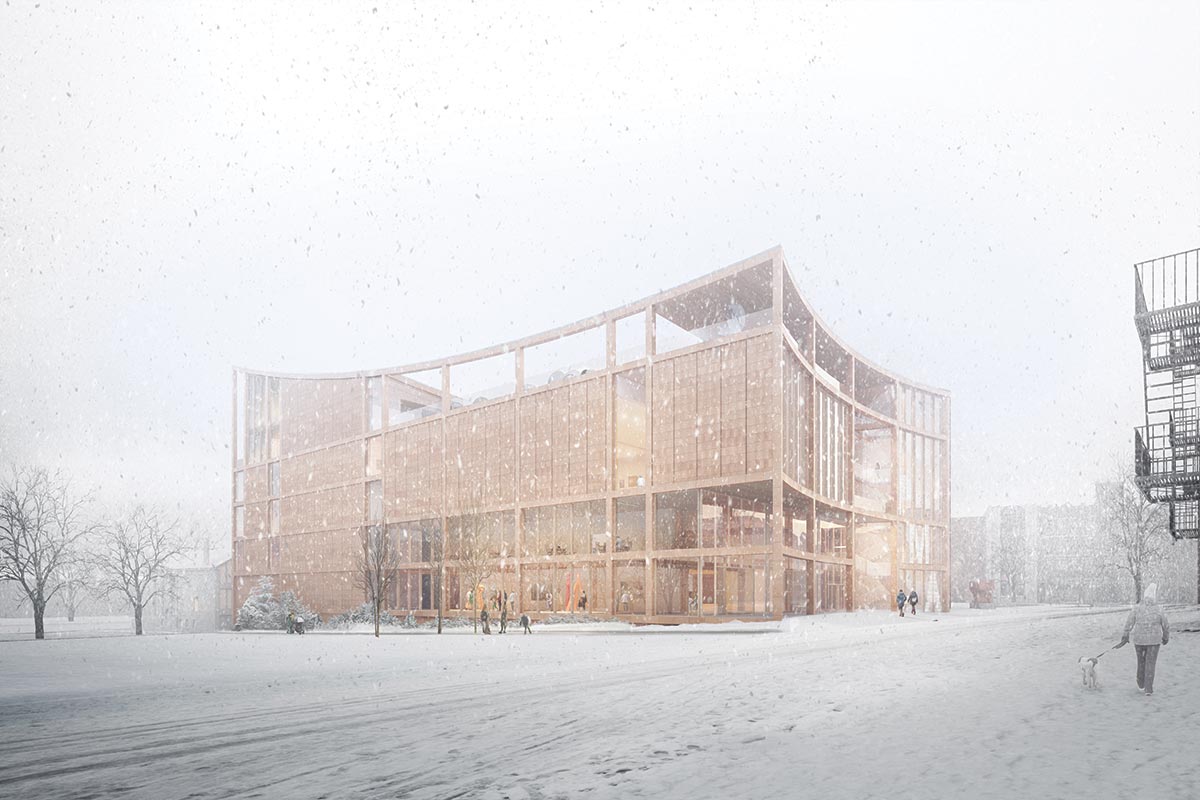
Image courtesy of DARC STUDIO, COURTESY PMA, LEVER ARCHITECTURE, DOVETAIL DESIGN STRATEGIES
SUMMIT BUILDING
A 1.5 million-square-foot extension of the Seattle Convention Center, the Summit building was completed in January. Designed by local firm LMN Architects, the centrally located urban project has six levels of event spaces, which include an 85,000-square-foot ballroom on the top level. The steel-framed building is visually open to the street via extensive glazing on the exterior, and LMN incorporated warm timber accents throughout the interior as a nod to the regional heritage of the lumber industry. The amphitheater-like social stairs, made from madrone hardwood native to the Pacific coast, cascade within the west-facing glass curtain wall from the fifth floor to the ground level. Above them hangs a canopy of dangling Douglas fir “combs.” This effect is repeated on the ceiling of the ballroom, where the combs are made up of wormwood—wood salvaged from log booms off the Washington coast in the Salish Sea, which is uniquely textured from the tunneling habits of Teredo clams. Pansy Schulman
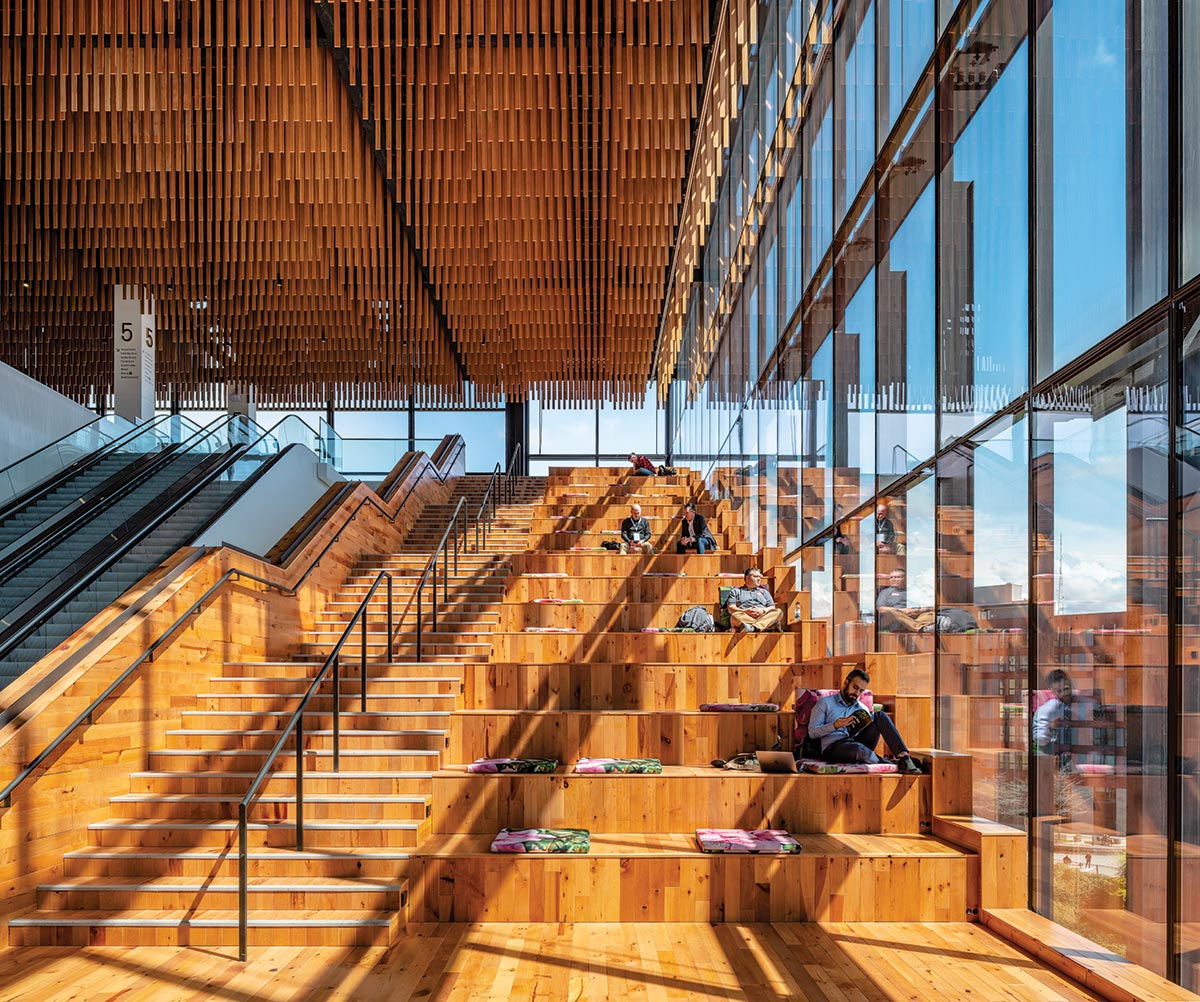
Photo © TIM GRIFFITH
NEW YORK CLIMATE EXCHANGE
The transformation of Governors Island continues with the April announcement that Stony Brook University will serve as anchor institution for a $700 million climate-solutions hub, planned for the 172-acre former military outpost in the heart of New York Harbor. Dubbed the New York Climate Exchange, the campus will be developed over two phases, with Skidmore, Ownings & Merrill (SOM) leading a team with three other firms. The design, as the firm’s own description puts it, intends to “weave new architecture into the island’s beloved park to create a living laboratory for research, education, and public enjoyment.” The first phase of the 400,000-square-foot facility will encompass a pair of sinuous mass-timber buildings by SOM. Centered around several acres of newly created public green space near the island’s eastern shoreline, these multistory pavilions will host spaces dedicated to education and research, and incorporate myriad sustainability strategies to help satisfy the holistic—and ultra-stringent—performance metrics of the Living Building Challenge. MH

Image © SOM, BRICK VISUAL
H1 APARTMENT BUILDING
At the Zwhatt development in Regensdorf, north of Zürich, Boltshauser Architekten is building a 24-story mass-timber apartment block due for completion in 2024. One of two residential towers programmed in Peter Märkli’s master plan, H1, as it is known, will contain 150 units ranging from studios to family duplexes, as well as a café and a coworking space in its lower levels. Winners of a 2019 design competition, Boltshauser proposed timber both for its low-carbon credentials and its speed of construction—approximately six months faster than an all-concrete tower, the architect estimates. Structurally hybrid, H1’s first five levels (including two basement floors) are poured-in-place concrete, as is the central elevator tower; around this core rises a timber/concrete structure comprising columns, beams, and facades in Swiss beech, with prefabricated concrete floors. Wind loads are transferred via the floors to the core and down to the podium, a solution that also fulfills seismic requirements. Outside, the red-metal-clad elevations feature brise-soleils carrying photovoltaic cells, while, inside, the timber/concrete structure is fully expressed. Residents will enjoy living rooms with loggias as well as highly flexible layouts. AA
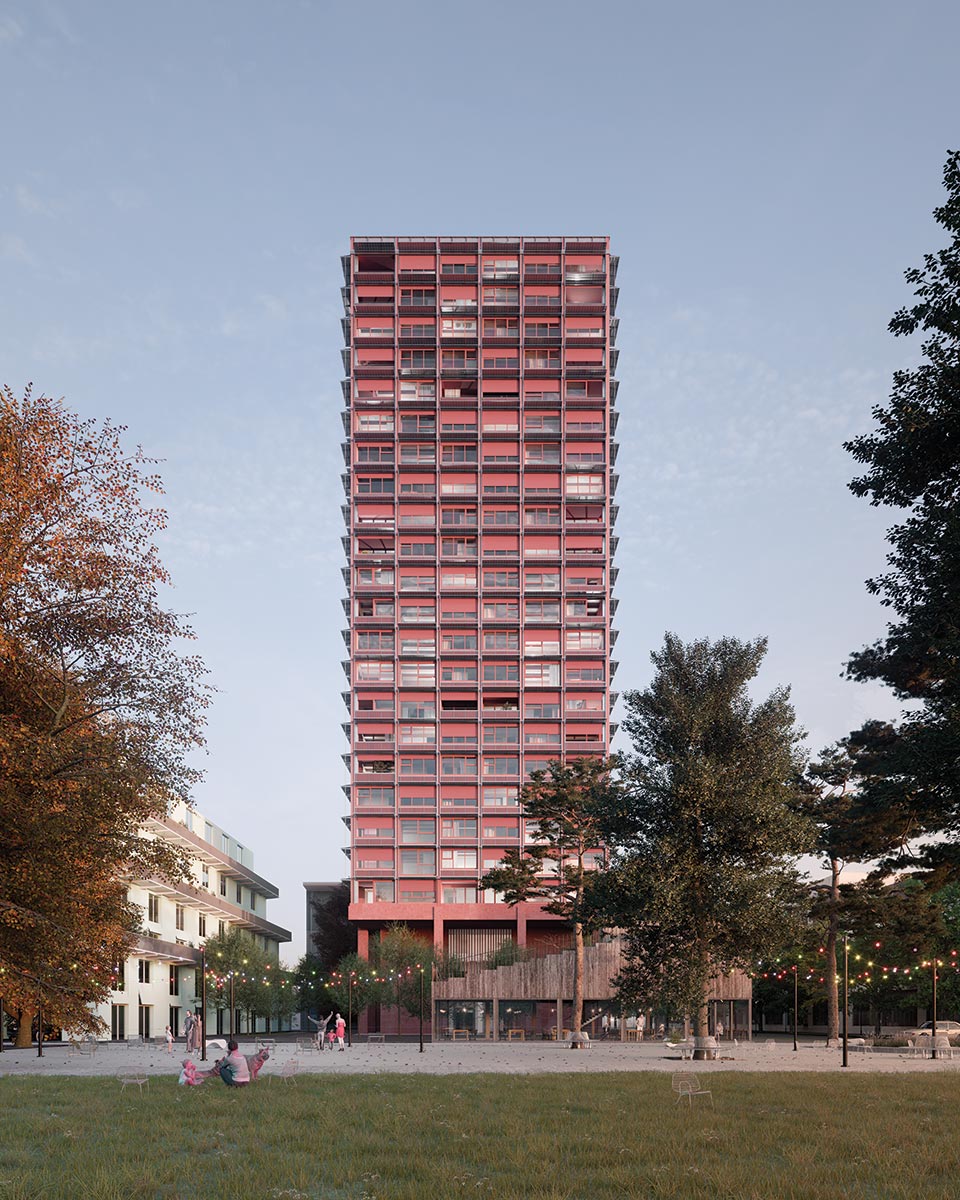
Images © Studio Blomen
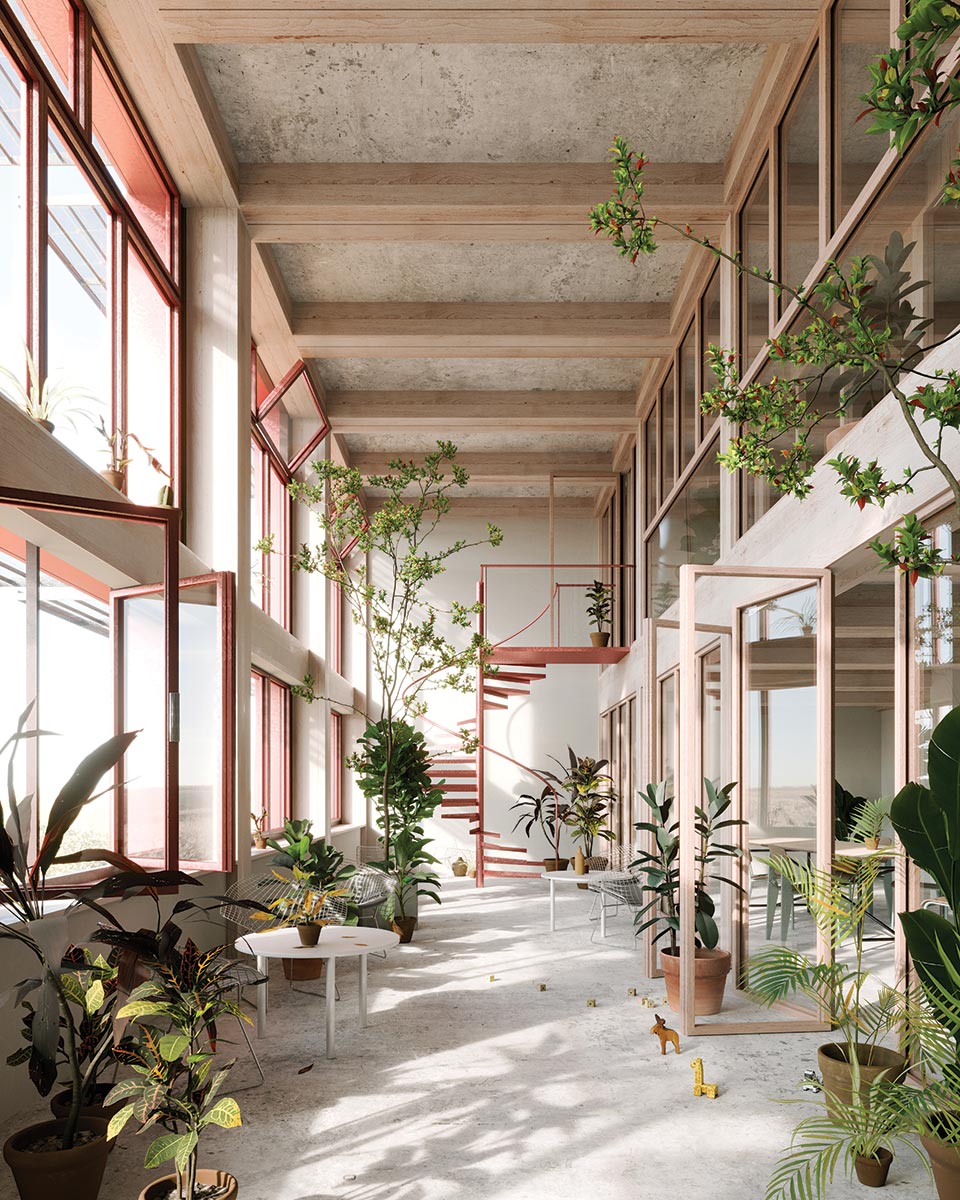
Image © Studio Blomen
ATLASSIAN
Australian software company Atlassian is building a new headquarters near Sydney’s Central Train Station. Designed by SHoP, with BVN as executive architect, the nearly 600-foot-tall structure is one of several projects vying to become the world’s tallest hybrid timber skyscraper. Atlassian Central Tower will include a 39-story shaft rising from a podium, a concrete core, and a steel exoskeleton. Within that framework, floors will be organized as four-story “habitats,” each a freestanding assemblage of glulam columns and beams and CLT floor slabs. Due to structural requirements and the need for large production volumes, these mass-timber components will be sourced from Europe, according to the architects. The hybrid approach is expected to produce a building with half the embodied carbon of a conventional skyscraper. It will be powered 100 per-cent by renewable energy, including electricity generated by facade-integrated photovoltaic panels. The project is targeting 5.5 out of six possible stars from the National Australian Built Environment Rating System (NABERS). Excavation began earlier this year, and steel erection for level 1 is slated to start in 2024. JG
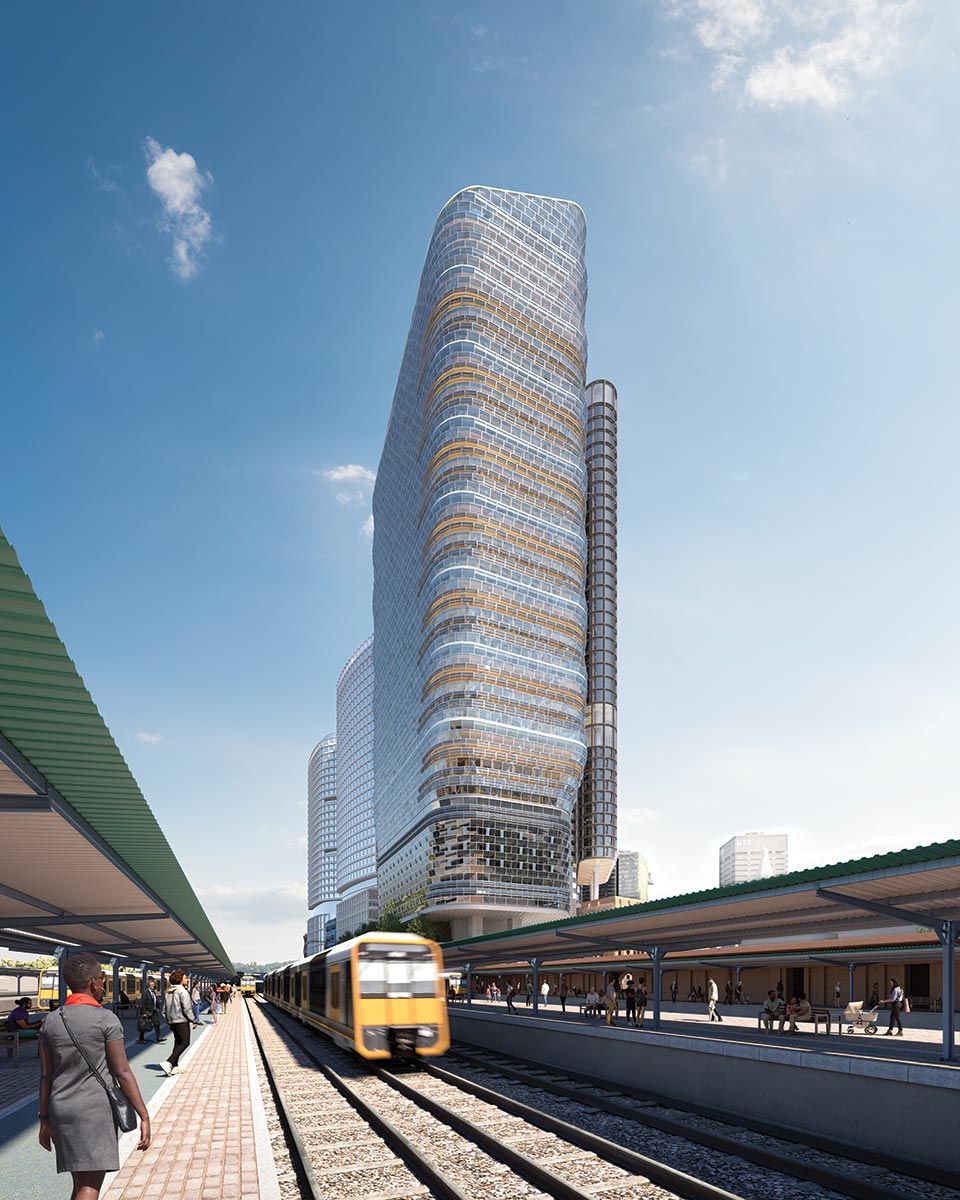
Photo © SHoP Architects
ZURICH AIRPORT
After a two-stage international design competition to overhaul Zurich Airport’s main terminal, Bjarke Ingels Group (BIG) and HOK were awarded the project in June of 2022. With an expected completion date of 2032, the winning redesign of the aging structure, originally built in the 1950s, is titled Raumfachwerk (or “space frame”) and will be constructed primarily with locally sourced timber. The ground-up renovation will consist of a seven-story central hub—with a new air-traffic-control tower, retail, and airport services for passengers—connecting to a narrow pier with a bevy of new gates and waiting areas. According to BIG principal Bjarke Ingels, the project is both “rooted in tradition and committed to innovation.” Its timber framing is an homage to Swiss architectural tradition, while its roof, which extends from the central hub through the length of the pier, will be entirely clad in solar shingles. PS
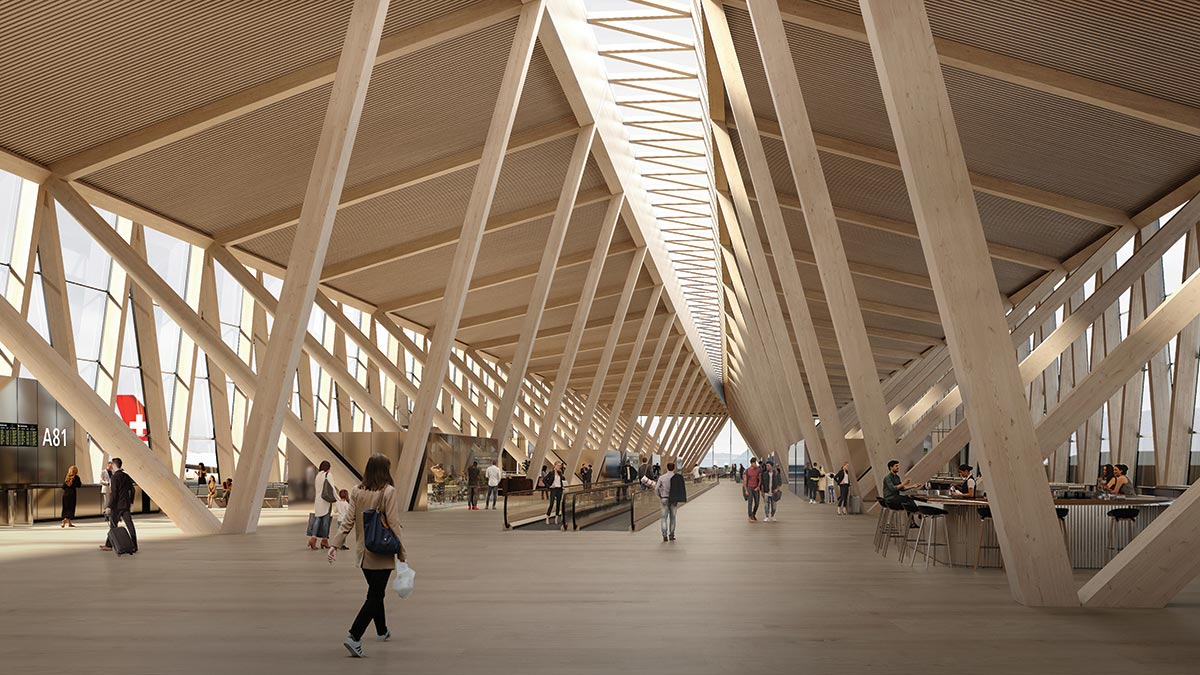
Image courtesy BIG
Glossary of Terms
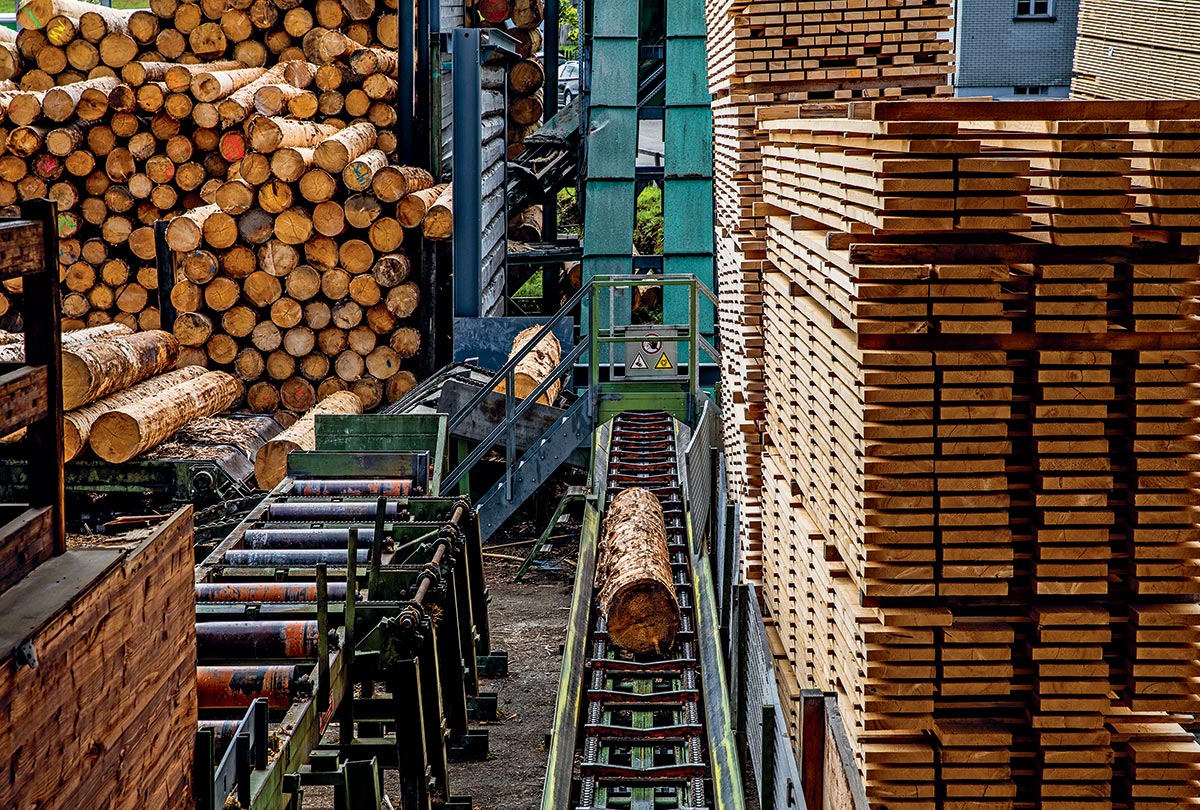
Photo © Stephan Rappo
biogenic carbon
The carbon in wood, paper, grass trimmings, and other organic matter removed from the atmosphere by photosynthesis, which will ultimately be returned to the atmosphere through burning or decay.
cross-laminated timber (CLT)
An engineered-wood panel consisting of layers of lumber stacked with the grain at 90-degree angles and glued together with structural adhesives. Applications include floor slabs, walls, and roofs (A).
dowel-laminated timber (DLT)
A mass-timber product made of dimensional softwood lumber stacked and friction-fit together with hardwood dowels. Although similar to nail-laminated timber, because the panels are made without nails or screws, they are safer to mill and cut. The panels can be used in flooring, roofing, and wall applications (B).
embodied carbon
The greenhouse gases emitted during the manufacturing, installation, maintenance, and disposal of building materials.
Forest Stewardship Council (FSC)
An international nongovernmental organization that oversees certification programs for forest management and wood and paper products.
glue-laminated timber (glulam)
An engineered-wood product commonly used for beams and columns. Laminations are glued together with their grains running parallel to the member’s length and are jointed end to end, allowing for long spans (C).
heavy timber
A traditional construction method in which the primary load-bearing system is made of large wood members.
laminated-veneer lumber (LVL)
n engineered-wood product manufactured from multiple thin layers of veneer that are aligned with the length of the finished lumber. It is often used for headers, beams, and rim board.
life cycle assessment (LCA)
A standard approach to quantifying the environmental impacts of a product or process during its entire life cycle, from the extraction of raw materials to disposal.
mass-plywood panels (MPP)
A large-scale structural panel made from wood veneers. This “super plywood” is manufactured of thin sheets of wood laid down in an alternating pattern with resin applied between each layer.
mass timber
A construction system in which the load-bearing elements are made of engineered components formed by laminating or fastening together layers of wood. These components are often fabricated off-site. .
nail-laminated timber (NLT)
A panel made of dimensional lumber placed on edge and mechanically fastened together with nails or screws, creating a single structural element. It is most commonly used for floor and roof systems (D).
Programme for the Endorsement of Forest Certification (PEFC)
A global alliance of national forest-certification systems.
Sustainable Forestry Initiative (SFI)
A nonprofit organization that provides a certification framework for forest management and wood and paper products.
Wildlands urban interface (WUI)
The zone of transition between wilderness and land developed by human activity, where the built environment meets the natural environment. Human settlements in the WUI are at greater risk of damage due to wildfire.
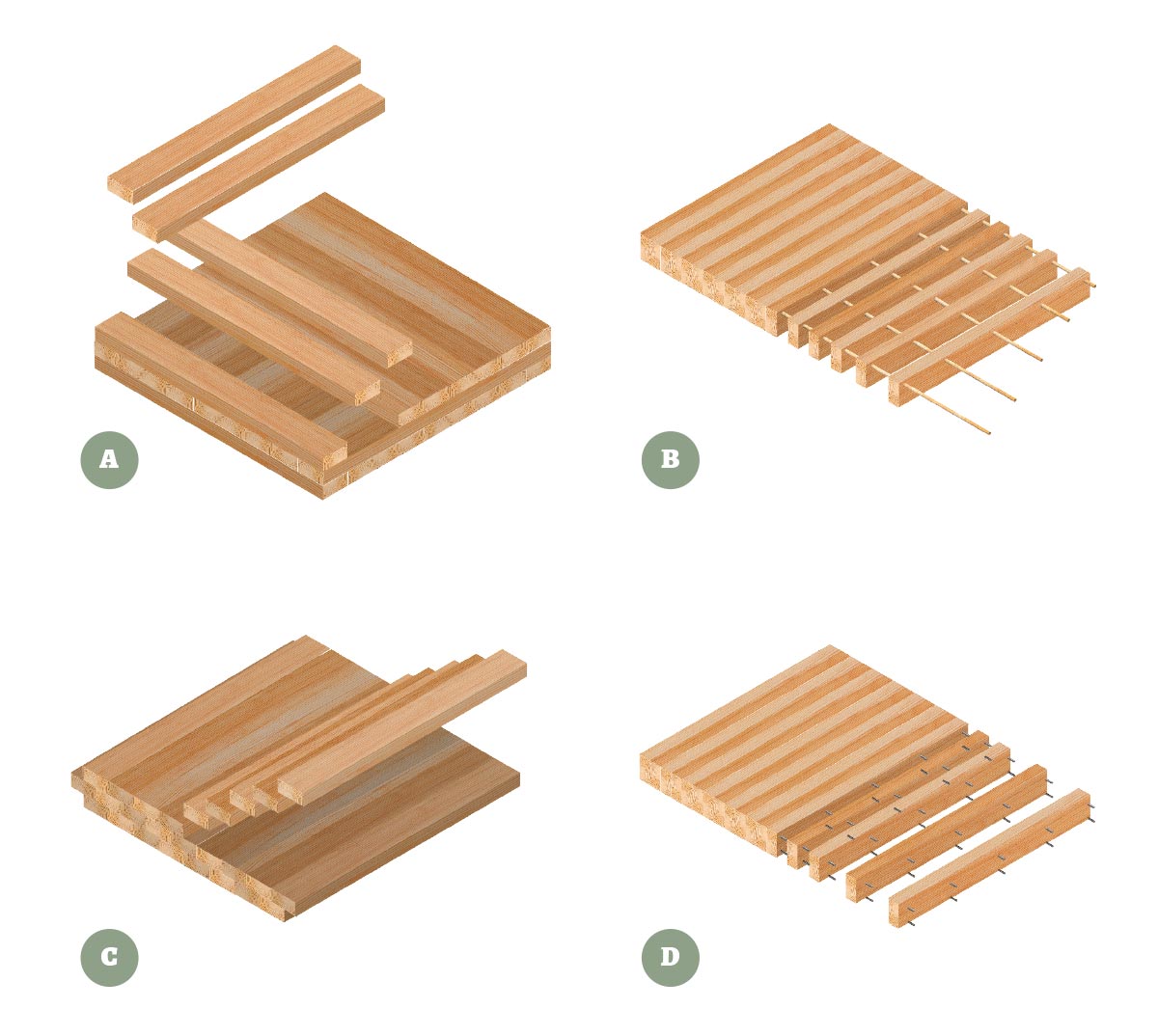
Image © Think Wood
Supplemental Materials:
Mythbusting Mass Timber (pages 12 though 14), by LEVER Architecture and Atelier Ten: Amy Leedham, Jonathan Heppner, Maggie Smith, and Timothy Cooke.



